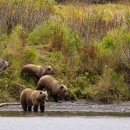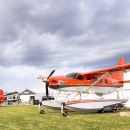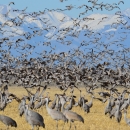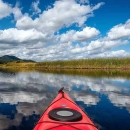Monitoring
Refuge biologists collaborate annually with Alaska Department of Fish and Game to conduct intensive aerial surveys (IAS) during the summer months to monitor bear population, density and composition on several stream systems within the Refuge. IAS involve flying a small aircraft low over the Refuge and counting the number of bears spotted. There is only a short window of time in May each year that IAS can be completed between when bears emerge from their dens and when green-up occurs and plants obscure the line of sight from the air.






